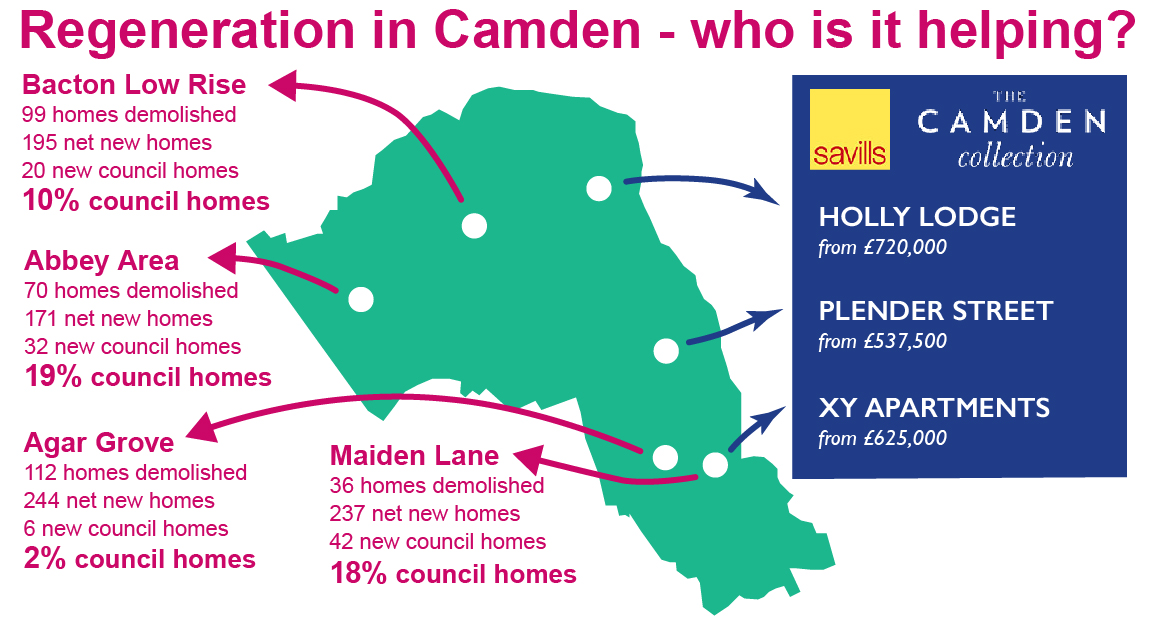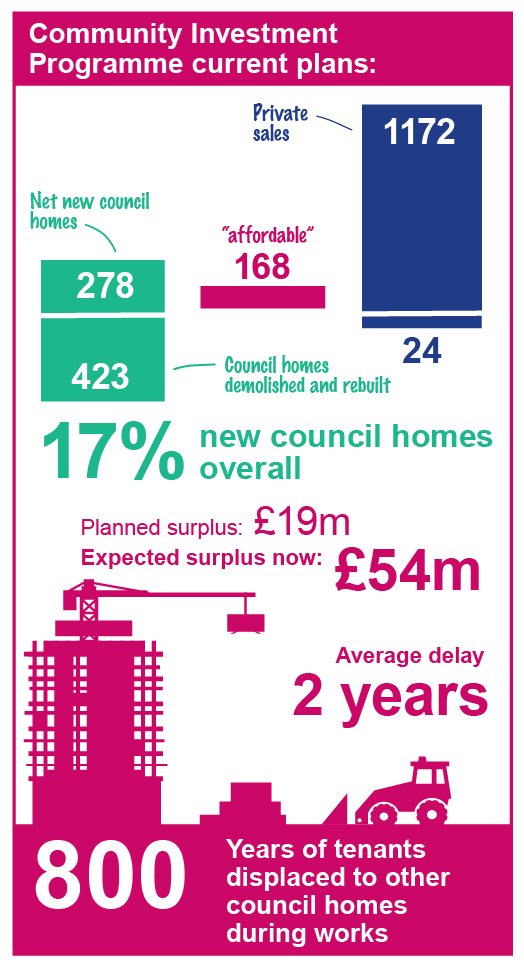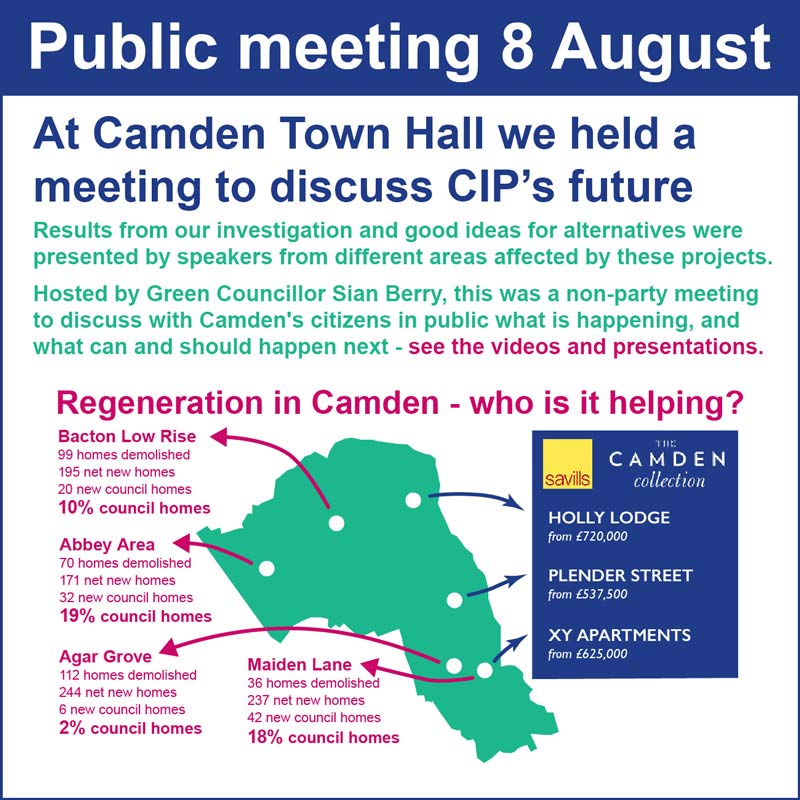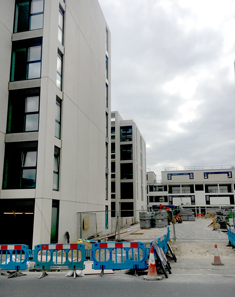Data released under FOI and what it tells us
Community Investment Programme key facts
The CIP has so far involved 20 projects that are planned or underway across Camden. They range from small ‘infill’ developments such as Kiln Place in Gospel Oak to large estate demolition projects such as Agar Grove in Cantelowes.
The Council is building a total of nearly 1200 new flats for full-price private sale, alongside 278 new council homes and 168 'intermediate' homes, mainly shared ownership - overall there are just 17% new council homes.
The data on this website is based on the results of Councillor Sian Berry's Freedom of Information request to Camden Council and will be updated as new data comes in on CIP schemes that are underway or still being adjusted as they go through planning.

Overall for the CIP:

- Over 400 council homes are being demolished and replaced
- Only 17% council homes in new housing (minus demolitions)
- Average 2 years of delays per project
- Schemes are £36 million more profitable than expected
- While works take place, nearly 800 years' worth of residents are being displaced to live in other council homes
With new council-owned sites like Camley Street coming up soon, isn't it time for a new community-led approach?
[See our full summary graphic]
Explore the schemes across Camden on our map
Accommodation Strategy key facts
The Accommodation Strategy is a rationalisation plan for Camden Council’s own offices and workspaces. It includes merging some depots, selling off several sites, and moving almost all the office-based staff into the new Town Hall building at 5 Pancras Square in the Kings Cross development.
The goal was to save on the very high running costs of older buildings in the long term, and originally the proceeds of the CIP were also needed to help subsidise this programme.
The results of our information requests show that:
- The plans when first made would have resulted in £87 million in receipts from sold-off land and buildings, leaving a deficit of £37 million after 5 Pancras Square was paid for.
- Rising land and property values mean that the eventual proceeds are now expected to be £131 million (once the final four sites are sold or finished at 156 West End Lane, 3 Cressy Road, Jamestown Road and Cockpit Yard/Holborn Library).
- The Council now expects an £8 million surplus for the programme as a whole.
In 2016 ‘Accommodation Strategy Phase II’ was put together. This includes plans for the Old Town Hall on Judd Street, with a new model of making money that involves keeping ownership and renting out the top three floors of offices at high-end rates on a long lease, while providing affordable workspace in the basement. The ground and first floors will continue to host democratic meetings and ceremonies as they do now.
Councillors and meetings would move to the Crowndale Centre during the works, and the sale of this building has therefore been put on hold (the financial consequence of this is included in the figures above).
Big questions people are asking about these programmes:
Why are there so few new council homes?
Why have so many homes been demolished?
Are grants being claimed for homes that just replace demolitions?
Why the long delays, with an impact on council housing capacity while residents move out for works?
Why no resident-led community housing in these plans?
The council is currently reviewing the CIP. Why aren’t they asking residents what they think and for their ideas?
We have found out that, since last year, a ‘working group’ of Labour councillors has been discussing potential options for the next phase of the Community Investment Programme.

The last time opposition councillors on the council’s scrutiny committees were asked about this was in April 2016. At this point the most dramatic change on the cards was to create a ‘wholly owned council housing company’ to manage and commission projects, similar to now, with any deals with developers to be discussed later.
We have now discovered that the working group is looking at far more drastic options, including a long-term deal that could partly transfer ownership to a big developer in a ‘strategic partnership’. This is very similar to the Haringey Development Vehicle which is proving so controversial in our next door borough.
There are other more benign options, including potentially leasing land to developers while keeping public ownership or simply seeking capital for building homes from long-term investors like pension funds.
We think the council should stop discussing this behind closed doors, go public with these options and ask residents what they think. There is no mention of them on the council’s ‘Camden Commission’ page and this is why we’ve launched the CIP challenge!
See more about the options and what the council has told us when we challenged them about these plans on our Future of the CIP page.
NEXT: The main problems and how they could be solved >>



